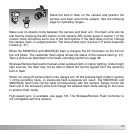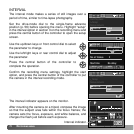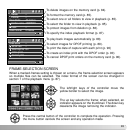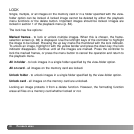
80
A
SHORT GUIDE TO PHOTOGRAPHY
Photography can be a rewarding pursuit. It is a broad and disciplined field that can take
years to master. But the pleasure in making photographs and the joy of capturing a
magical moment cannot be compared. The guide is an introduction to some basic
photographic principles.
A SHORT GUIDE TO PHOTOGRAPHY
The lens aperture controls not only exposure, but also
depth of field; the area between the closest object in focus
and the furthest object in focus. The larger the aperture
value, the greater the depth of field and the longer the
shutter speed needed to make the exposure. The smaller
the aperture value, the shallower the depth of field and the
faster the shutter speed needed to make the exposure.
Usually landscape photographs use a large depth of field
(large aperture value) to keep the foreground and
background in focus, and portraits use a shallow depth of
field (small aperture value) to separate the subject from the
background.
Depth of field also changes with focal length. The smaller
the focal length, the greater the depth of field; the longer
the focal length, the shallower the depth of field.
The shutter controls not only exposure, but also the ability
to stop motion. Fast shutter speeds are used in sport
photography to stop action. Slow shutter speeds can be
used to show the flow of motion such as water cascading
over a waterfall. The use of a tripod is recommended with
slow shutter speeds.
For critical work, take a test photograph and view the result
in playback (p. 34). The image can be deleted if not
acceptable


















